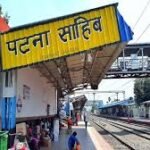Most Literate District of Nagaland: A Closer Look
Introduction to the News
Nagaland has recently been in the spotlight for its impressive literacy statistics, particularly in one of its districts. The latest reports highlight that the district of Kohima has achieved the status of the most literate district in the state. This recognition is a significant milestone for Nagaland and reflects the broader educational progress in the region.
Kohima’s Literacy Achievement
Kohima, the capital district of Nagaland, has surpassed others in terms of literacy rates. According to the latest census data, Kohima has achieved an exceptional literacy rate, setting a benchmark for educational standards in the state. The district’s focus on improving educational infrastructure and access has played a crucial role in this achievement.
Educational Initiatives and Improvements
Over the past decade, Kohima has seen substantial improvements in its educational sector. Several initiatives, including the establishment of new schools, teacher training programs, and community engagement efforts, have contributed to the district’s high literacy rate. The government’s commitment to enhancing educational facilities has been pivotal in this progress.
Impact on Local Communities
The high literacy rate in Kohima is having a transformative effect on local communities. Educated individuals are better equipped to pursue higher education and employment opportunities, leading to economic and social advancements. The increased literacy rate also supports informed decision-making and active community participation.
Future Prospects and Challenges
While Kohima’s achievement is commendable, there are ongoing challenges that need to be addressed. Ensuring that literacy improvements are sustained and extended to other districts is crucial. Continued investment in education and addressing disparities will be essential for maintaining and enhancing educational standards across Nagaland.

Why This News is Important
Educational Milestone for Nagaland
The achievement of Kohima as the most literate district in Nagaland is a significant milestone for the state. It underscores the progress made in improving educational standards and provides a model for other districts to follow. This development reflects the effectiveness of the educational initiatives implemented in recent years.
Model for Educational Success
Kohima’s success serves as a valuable case study for other regions looking to enhance their literacy rates. The district’s strategies and improvements in educational infrastructure can offer insights and best practices for similar initiatives elsewhere. The recognition of Kohima highlights the potential for positive outcomes when targeted efforts are made to improve education.
Economic and Social Impact
High literacy rates have far-reaching impacts beyond education. In Kohima, the increased literacy has led to better job opportunities and economic growth. Educated individuals contribute more effectively to their communities, leading to overall socio-economic development. This ripple effect illustrates the broader benefits of investing in education.
Government and Community Efforts
The achievement reflects the concerted efforts of both government and community organizations in Kohima. Their collaboration in improving educational facilities and promoting literacy has been instrumental. This collective approach highlights the importance of joint efforts in achieving educational goals and underscores the role of community involvement.
Encouraging Further Improvements
The recognition of Kohima’s literacy rate encourages continued efforts to improve education across Nagaland. It sets a high standard and motivates other districts to enhance their educational programs. The achievement serves as an impetus for ongoing educational reforms and investments, aiming for widespread improvements throughout the state.
Historical Context:
Educational Progress in Nagaland
Historical Overview of Education in Nagaland
Nagaland has a rich history of educational development, with significant progress made over the decades. Initially, educational opportunities were limited, but over time, the state has invested in expanding access and improving educational standards. Various policies and initiatives have been introduced to promote literacy and educational attainment.
Key Milestones in Educational Development
In recent years, Nagaland has seen several key milestones in its educational journey. The establishment of new schools, implementation of literacy programs, and increased funding for education have been crucial in advancing educational outcomes. The state’s focus on improving infrastructure and teacher training has also played a vital role.
Current Status and Future Outlook
Today, Nagaland continues to build on its educational achievements with a focus on sustaining progress and addressing challenges. The success of districts like Kohima highlights the positive impact of these efforts and provides a foundation for further improvements. The state remains committed to enhancing educational opportunities and achieving higher literacy rates across all districts.
Key Takeaways from Kohima’s Literacy Achievement
| Serial Number | Key Takeaway |
|---|---|
| 1 | Kohima is recognized as the most literate district in Nagaland. |
| 2 | The district’s high literacy rate reflects successful educational initiatives. |
| 3 | Improvements include new schools, teacher training, and community engagement. |
| 4 | High literacy rates contribute to economic and social advancements in the community. |
| 5 | The achievement serves as a model and motivator for other districts to improve their educational standards. |
Important FAQs for Students from this News
1. What is the most literate district in Nagaland?
The most literate district in Nagaland is Kohima. The district has achieved a high literacy rate, surpassing other districts in the state.
2. How has Kohima achieved its high literacy rate?
Kohima’s high literacy rate is the result of various educational initiatives, including the establishment of new schools, enhanced teacher training programs, and community engagement efforts.
3. What impact does Kohima’s literacy achievement have on the local community?
The high literacy rate in Kohima has led to better job opportunities, economic growth, and social advancements in the community. Educated individuals contribute more effectively to their communities, enhancing overall socio-economic development.
4. Why is Kohima’s achievement significant for other districts in Nagaland?
Kohima’s achievement serves as a model for other districts, demonstrating the effectiveness of targeted educational efforts. It provides insights and best practices that other districts can adopt to improve their literacy rates.
5. What challenges does Kohima face despite its high literacy rate?
Despite its success, Kohima faces challenges in sustaining its literacy achievements and extending improvements to other districts. Continued investment in education and addressing disparities are crucial for maintaining progress.
Some Important Current Affairs Links


















 Exciting News!
Exciting News!  Join Our Telegram Channel Now!
Join Our Telegram Channel Now!
 Join our Telegram channel for a thrilling adventure into the world of daily current affairs.
Join our Telegram channel for a thrilling adventure into the world of daily current affairs. 
 Don’t miss out on the latest updates and insights! Click to join now and be part of the knowledge revolution!
Don’t miss out on the latest updates and insights! Click to join now and be part of the knowledge revolution! 
